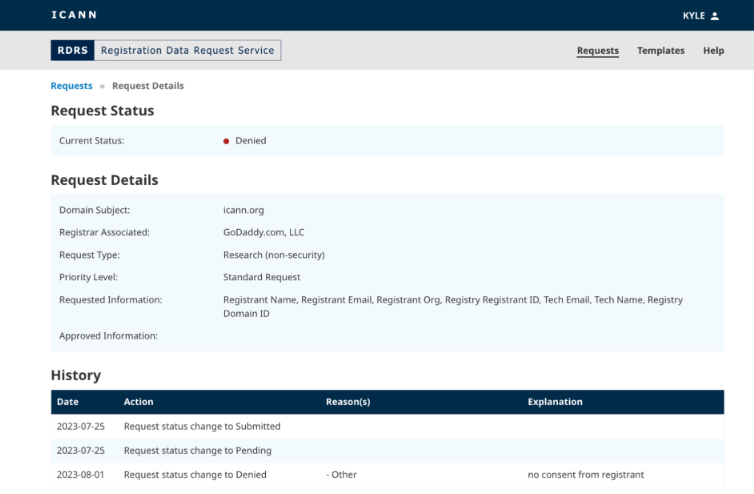The U.S. Federal Bureau of Investigation (FBI) disclosed today that it infiltrated the world’s second most prolific ransomware gang, a Russia-based criminal group known as ALPHV and BlackCat. The FBI said it seized the gang’s darknet website, and released a decryption tool that hundreds of victim companies can use to recover systems. Meanwhile, BlackCat responded by briefly “unseizing” its darknet site with a message promising 90 percent commissions for affiliates who continue to work with the crime group, and open season on everything from hospitals to nuclear power plants.

A slightly modified version of the FBI seizure notice on the BlackCat darknet site (Santa caps added).
Whispers of a possible law enforcement action against BlackCat came in the first week of December, after the ransomware group’s darknet site went offline and remained unavailable for roughly five days. BlackCat eventually managed to bring its site back online, blaming the outage on equipment malfunctions.
But earlier today, the BlackCat website was replaced with an FBI seizure notice, while federal prosecutors in Florida released a search warrant explaining how FBI agents were able to gain access to and disrupt the group’s operations.
A statement on the operation from the U.S. Department of Justice says the FBI developed a decryption tool that allowed agency field offices and partners globally to offer more than 500 affected victims the ability to restore their systems.
“With a decryption tool provided by the FBI to hundreds of ransomware victims worldwide, businesses and schools were able to reopen, and health care and emergency services were able to come back online,” Deputy Attorney General Lisa O. Monaco said. “We will continue to prioritize disruptions and place victims at the center of our strategy to dismantle the ecosystem fueling cybercrime.”
The DOJ reports that since BlackCat’s formation roughly 18 months ago, the crime group has targeted the computer networks of more than 1,000 victim organizations. BlackCat attacks usually involve encryption and theft of data; if victims refuse to pay a ransom, the attackers typically publish the stolen data on a BlackCat-linked darknet site.
BlackCat formed by recruiting operators from several competing or disbanded ransomware organizations — including REvil, BlackMatter and DarkSide. The latter group was responsible for the Colonial Pipeline attack in May 2021 that caused nationwide fuel shortages and price spikes.
Like many other ransomware operations, BlackCat operates under the “ransomware-as-a-service” model, where teams of developers maintain and update the ransomware code, as well as all of its supporting infrastructure. Affiliates are incentivized to attack high-value targets because they generally reap 60-80 percent of any payouts, with the remainder going to the crooks running the ransomware operation.
BlackCat was able to briefly regain control over their darknet server today. Not long after the FBI’s seizure notice went live the homepage was “unseized” and retrofitted with a statement about the incident from the ransomware group’s perspective.

The message that was briefly on the homepage of the BlackCat ransomware group this morning. Image: @GossiTheDog.
BlackCat claimed that the FBI’s operation only touched a portion of its operations, and that as a result of the FBI’s actions an additional 3,000 victims will no longer have the option of receiving decryption keys. The group also said it was formally removing any restrictions or discouragement against targeting hospitals or other critical infrastructure.
“Because of their actions, we are introducing new rules, or rather, we are removing ALL rules except one, you cannot touch the CIS [a common restriction against attacking organizations in Russia or the Commonwealth of Independent States]. You can now block hospitals, nuclear power plants, anything, anywhere.”
The crime group also said it was setting affiliate commissions at 90 percent, presumably to attract interest from potential affiliates who might otherwise be spooked by the FBI’s recent infiltration. BlackCat also promised that all “advertisers” under this new scheme would manage their affiliate accounts from data centers that are completely isolated from each other.
BlackCat’s darknet site currently displays the FBI seizure notice. But as BleepingComputer founder Lawrence Abrams explained on Mastodon, both the FBI and BlackCat have the private keys associated with the Tor hidden service URL for BlackCat’s victim shaming and data leak site.
“Whoever is the latest to publish the hidden service on Tor (in this case the BlackCat data leak site), will resume control over the URL,” Abrams said. “Expect to see this type of back and forth over the next couple of days.”
The DOJ says anyone with information about BlackCat affiliates or their activities may be eligible for up to a $10 million reward through the State Department’s “Rewards for Justice” program, which accepts submissions through a Tor-based tip line (visiting the site is only possible using the Tor browser).
Further reading: CISA StopRansomware Alert on the tools, techniques and procedures used by ALPHV/BlackCat.
More than five years after domain name registrars started redacting personal data from all public domain registration records, the non-profit organization overseeing the domain industry has introduced a centralized online service designed to make it easier for researchers, law enforcement and others to request the information directly from registrars.

In May 2018, the Internet Corporation for Assigned Names and Numbers (ICANN) — the nonprofit entity that manages the global domain name system — instructed all registrars to redact the customer’s name, address, phone number and email from WHOIS, the system for querying databases that store the registered users of domain names and blocks of Internet address ranges.
ICANN made the policy change in response to the General Data Protection Regulation (GDPR), a law enacted by the European Parliament that requires companies to gain affirmative consent for any personal information they collect on people within the European Union. In the meantime, registrars were to continue collecting the data but not publish it, and ICANN promised it would develop a system that facilitates access to this information.
At the end of November 2023, ICANN launched the Registration Data Request Service (RDRS), which is designed as a one-stop shop to submit registration data requests to participating registrars. This video from ICANN walks through how the system works.
Accredited registrars don’t have to participate, but ICANN is asking all registrars to join and says participants can opt out or stop using it at any time. ICANN contends that the use of a standardized request form makes it easier for the correct information and supporting documents to be provided to evaluate a request.
ICANN says the RDRS doesn’t guarantee access to requested registration data, and that all communication and data disclosure between the registrars and requestors takes place outside of the system. The service can’t be used to request WHOIS data tied to country-code top level domains (CCTLDs), such as those ending in .de (Germany) or .nz (New Zealand), for example.

The RDRS portal.
As Catalin Cimpanu writes for Risky Business News, currently investigators can file legal requests or abuse reports with each individual registrar, but the idea behind the RDRS is to create a place where requests from “verified” parties can be honored faster and with a higher degree of trust.
The registrar community generally views public WHOIS data as a nuisance issue for their domain customers and an unwelcome cost-center. Privacy advocates maintain that cybercriminals don’t provide their real information in registration records anyway, and that requiring WHOIS data to be public simply causes domain registrants to be pestered by spammers, scammers and stalkers.
Meanwhile, security experts argue that even in cases where online abusers provide intentionally misleading or false information in WHOIS records, that information is still extremely useful in mapping the extent of their malware, phishing and scamming operations. What’s more, the overwhelming majority of phishing is performed with the help of compromised domains, and the primary method for cleaning up those compromises is using WHOIS data to contact the victim and/or their hosting provider.
Anyone looking for copious examples of both need only to search this Web site for the term “WHOIS,” which yields dozens of stories and investigations that simply would not have been possible without the data available in the global WHOIS records.
KrebsOnSecurity remains doubtful that participating registrars will be any more likely to share WHOIS data with researchers just because the request comes through ICANN. But I look forward to being wrong on this one, and will certainly mention it in my reporting if the RDRS proves useful.
Regardless of whether the RDRS succeeds or fails, there is another European law that takes effect in 2024 which is likely to place additional pressure on registrars to respond to legitimate WHOIS data requests. The new Network and Information Security Directive (NIS2), which EU member states have until October 2024 to implement, requires registrars to keep much more accurate WHOIS records, and to respond within as little as 24 hours to WHOIS data requests tied everything from phishing, malware and spam to copyright and brand enforcement.